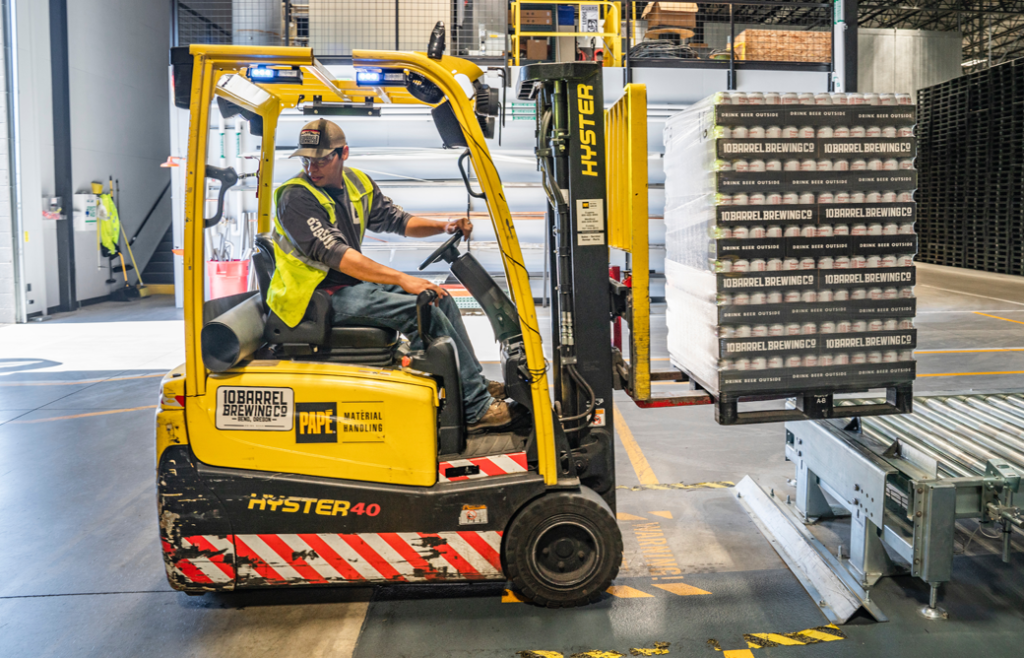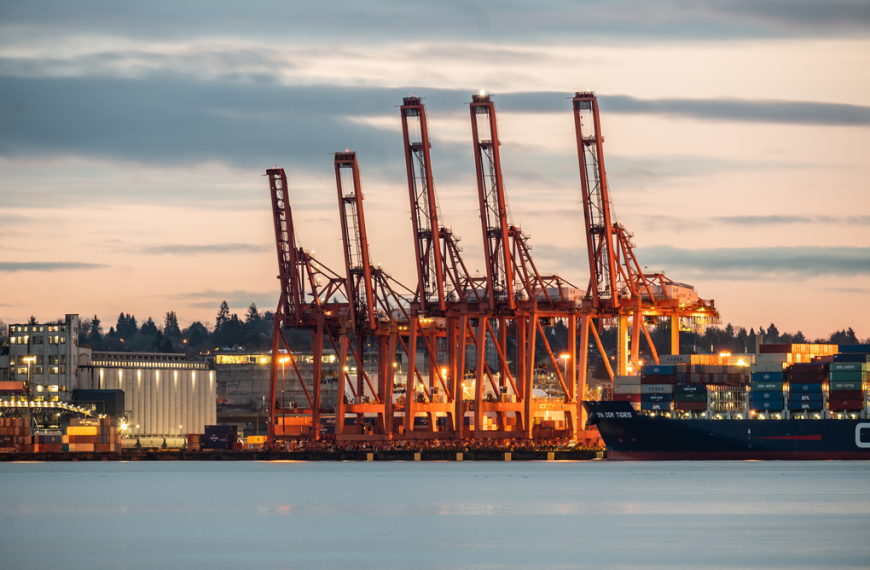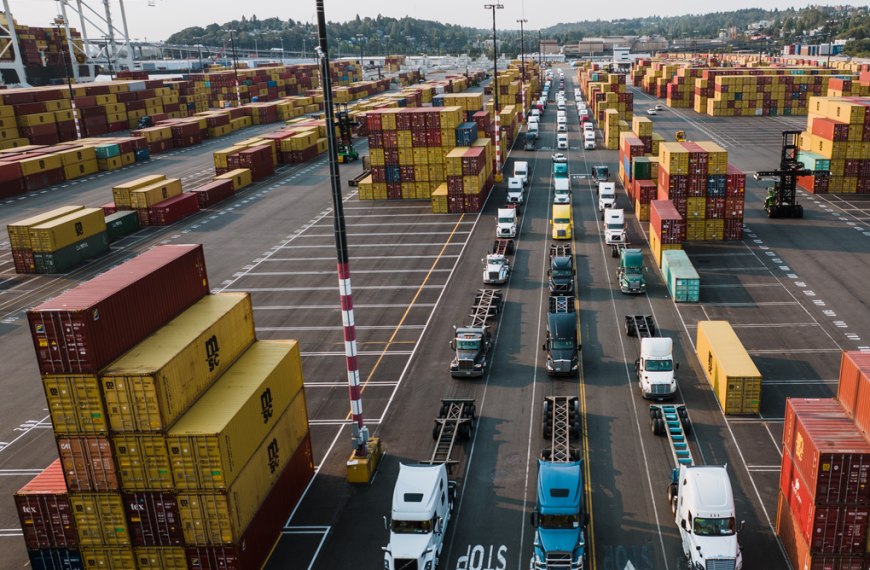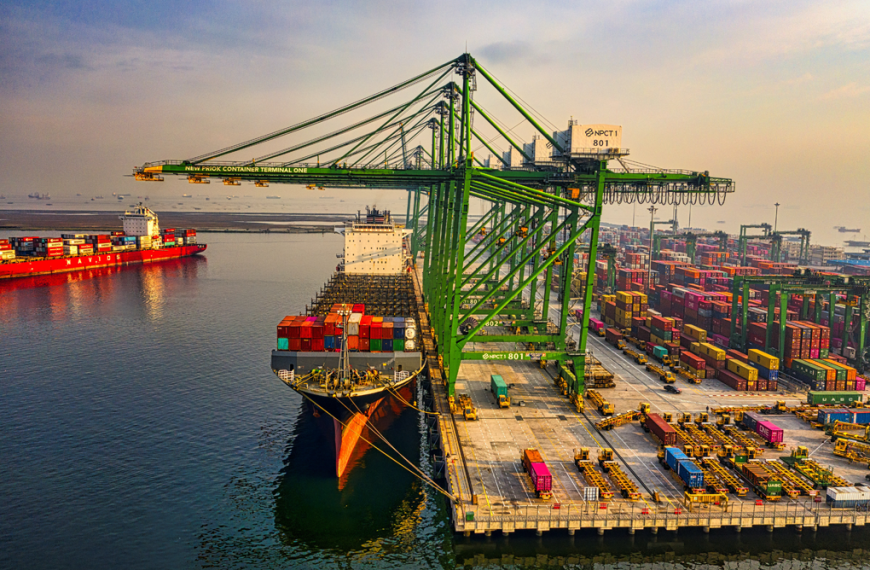In the fast-paced world we live in, the Freight Industry plays a pivotal role in ensuring the seamless movement of goods. From raw materials to finished products, the industry acts as the lifeline that keeps businesses thriving and customers satisfied. However, as demands increase and competition intensifies, the need to streamline operations becomes paramount.
Enter the realm of Artificial Intelligence (AI), an ingenious concept that is revolutionizing the way we approach Freight Logistics. With AI-powered solutions, businesses are unleashing unprecedented levels of efficiency, driving innovation, and propelling the freight industry into an exciting new era.
- The Rise of AI in Freight Transportation
- Streamlining Operations with AI
- Embracing a Bright Future
- 15 Benefits of AI in Freight Logistics
- AI-Powered Route Optimization: Transforming Freight Logistics Efficiency
- Predictive Maintenance and Asset Management: Revolutionizing the Freight Industry
- Intelligent Warehouse Management: Revolutionizing Freight Logistics
- Real-time Tracking and Supply Chain Visibility: Unlocking the Potential of Freight Logistics
- AI and Last-Mile Delivery Optimization: Revolutionizing Freight Logistics
- The Significance of Last-Mile Delivery
- Leveraging AI for Last-Mile Delivery Optimization
- Embrace the Future of Last-Mile Delivery Optimization
- Frequently Asked Questions (FAQs)
The Rise of AI in Freight Transportation
Gone are the days of traditional logistics approaches that relied heavily on manual processes and intuition. AI is the catalyst reshaping the landscape of Freight Transportation. By harnessing the power of Cutting-Edge AI Solutions, businesses can tap into a plethora of benefits that enhance productivity, accuracy, and overall performance.
Let’s embark on a journey to explore the ways in which AI is reshaping the Freight Industry and revolutionizing the way goods are transported worldwide.
Streamlining Operations with AI
- Optimized Route Planning: Say goodbye to inefficiencies and unnecessary detours! AI algorithms analyze a myriad of variables such as traffic patterns, weather conditions, and delivery priorities. By doing so, they create optimized routes that minimize travel time, reduce costs, and ensure goods arrive at their destinations swiftly.
- Real-Time Tracking: Gone are the days of guesswork and uncertainty. AI-powered tracking systems provide businesses with real-time visibility into the whereabouts of their shipments. Shippers and customers can monitor the progress of goods, anticipate any potential delays, and make informed decisions to ensure a smooth and transparent supply chain.
- Efficient Warehouse Management: AI-driven warehouse management systems are transforming the way goods are stored, sorted, and prepared for transportation. With machine learning capabilities, businesses can automate inventory management, optimize space utilization, and minimize errors. The result? Improved efficiency, faster order fulfillment, and enhanced customer satisfaction.
- Intelligent Demand Forecasting: AI algorithms have the uncanny ability to analyze vast amounts of data and identify patterns. By leveraging this capability, businesses can accurately forecast demand, ensuring the right amount of inventory is available at the right time. This proactive approach prevents stockouts, reduces excess inventory, and streamlines supply chain operations.

Embracing a Bright Future
As the freight industry embraces Cutting-Edge AI Solutions, a brighter future awaits. The synergy between human expertise and AI technology holds the key to unlocking unprecedented levels of productivity, efficiency, and innovation. By leveraging the power of AI in Freight Logistics, businesses can stay one step ahead of the competition, meet customer demands with precision, and navigate the dynamic landscape of the global market.
So, fasten your seatbelts, dear readers, and get ready to embark on a remarkable journey where the world of Freight Logistics collides with the boundless potential of Artificial Intelligence. Together, we will navigate the ever-evolving landscape of the freight industry and witness the transformative power of AI in action. Let’s embrace this revolution and unlock the true potential of Freight Transportation in the digital age!
15 Benefits of AI in Freight Logistics
To meet the demands of a highly competitive market, the industry is turning to Artificial Intelligence (AI) as a game-changing solution. By leveraging AI in Freight Logistics and Freight Transportation, businesses are unlocking a myriad of benefits that drive efficiency, enhance customer satisfaction, and revolutionize the way goods are moved. Let’s explore 15 remarkable benefits that AI brings to the table:
| Benefits | Explanation |
|---|---|
| 1. Enhanced Route Optimization | AI algorithms analyze various factors, such as traffic patterns, delivery priorities, and real-time data, to create optimized routes that minimize travel time and reduce costs. |
| 2. Real-Time Tracking and Visibility | AI-powered tracking systems provide real-time visibility into the movement of goods, enabling businesses to monitor shipments, anticipate delays, and ensure a transparent supply chain. |
| 3. Improved Demand Forecasting | AI algorithms analyze historical and real-time data to accurately forecast demand, enabling businesses to optimize inventory levels, reduce stockouts, and streamline supply chain operations. |
| 4. Intelligent Warehouse Management | AI-driven warehouse management systems automate inventory management, optimize space utilization, and improve order fulfillment accuracy, leading to enhanced efficiency and cost savings. |
| 5. Predictive Maintenance | AI analyzes equipment data to predict maintenance needs, allowing businesses to proactively schedule maintenance, reduce downtime, and extend the lifespan of critical assets. |
| 6. Efficient Last-Mile Delivery | AI optimizes last-mile delivery by considering variables like delivery windows, traffic conditions, and customer preferences, ensuring faster and more cost-effective deliveries. |
| 7. Data-Driven Decision Making | AI enables businesses to make data-driven decisions by analyzing vast amounts of information, uncovering patterns, and providing actionable insights for strategic planning and operational improvements. |
| 8. Error Reduction and Quality Control | AI-powered systems minimize human errors in tasks such as order processing, labeling, and sorting, ensuring higher accuracy and quality control throughout the logistics process. |
| 9. Cost Savings | AI helps businesses optimize operations, reduce inefficiencies, and minimize expenses related to fuel consumption, labor, maintenance, and inventory management, leading to significant cost savings. |
| 10. Enhanced Customer Experience | AI enables businesses to provide real-time tracking, accurate delivery estimates, and proactive notifications to customers, resulting in improved transparency, reliability, and overall customer satisfaction. |
| 11. Fraud Detection and Security | AI algorithms can identify patterns and anomalies in data, enabling businesses to detect and prevent fraudulent activities, ensuring the security and integrity of the freight logistics process. |
| 12. Compliance and Risk Management | AI helps businesses ensure compliance with regulations, monitor and manage risks, and identify potential issues in areas such as safety, security, and legal requirements. |
| 13. Sustainability and Environmental Impact | AI facilitates eco-friendly practices by optimizing route planning, reducing fuel consumption, minimizing emissions, and promoting greener transportation methods, contributing to a more sustainable freight industry. |
| 14. Scalability and Flexibility | AI-powered systems can handle large volumes of data and adapt to changing business needs, allowing companies to scale their operations, accommodate growth, and remain agile in a dynamic market. |
| 15. Competitive Advantage | By leveraging AI in freight logistics, businesses gain a competitive edge through increased efficiency, improved customer service, cost savings, and the ability to innovate and adapt to market demands more effectively. |
The integration of AI in Freight Logistics and Freight Transportation brings a multitude of benefits that revolutionize the industry. From optimized route planning to real-time tracking, demand forecasting to error reduction, AI drives efficiency, cost savings, and customer satisfaction.

AI-Powered Route Optimization: Transforming Freight Logistics Efficiency
In the vast realm of Freight Logistics and Freight Transportation, efficiency and cost-effectiveness are key factors that drive success. One of the revolutionary ways businesses are achieving optimization is through AI-powered route optimization. This cutting-edge technology is transforming the industry, redefining how goods are transported and paving the way for a more streamlined and efficient supply chain.
The Challenge of Route Planning
Navigating the complexities of the freight industry involves intricate route planning, taking into account numerous variables such as delivery priorities, traffic conditions, fuel consumption, and delivery time windows. Manual route planning is time-consuming, error-prone, and often fails to account for real-time changes and dynamic factors. This is where AI steps in to revolutionize Freight Logistics.
Harnessing the Power of AI
AI-powered route optimization systems leverage advanced algorithms and vast amounts of data to create optimized routes tailored to specific logistical requirements. Let’s explore how AI transforms the route planning process and unlocks numerous benefits for businesses:
- Efficiency Unleashed: AI algorithms process extensive data sets, including historical and real-time data, to identify the most efficient routes. By considering variables like traffic patterns, road conditions, and delivery priorities, AI-powered systems create routes that minimize travel time and reduce fuel consumption, leading to significant cost savings.
- Reduced Delays, Enhanced Reliability: Real-time data integration enables AI algorithms to account for unexpected events such as traffic congestion, accidents, or road closures. By continuously analyzing and adapting to changing conditions, AI ensures routes are dynamically adjusted to avoid delays and maintain reliable delivery schedules.
- Optimized Resource Utilization: AI takes into account multiple resources, including vehicles, drivers, and available capacity, to optimize the allocation of resources across different routes. This results in maximized fleet utilization, reduced empty miles, and improved overall operational efficiency.
- Improved Customer Service: Timely deliveries are crucial for customer satisfaction. AI-powered route optimization ensures that goods reach their destinations within the designated time frames, providing customers with accurate delivery estimates, proactive notifications, and reliable service, fostering trust and loyalty.
- Cost Reduction: By minimizing travel distances, optimizing resource allocation, and reducing fuel consumption, AI-powered route optimization significantly cuts operational costs. Businesses can save on fuel expenses, labor costs, and vehicle maintenance, contributing to higher profitability.
- Environmental Sustainability: Route optimization not only benefits businesses but also the environment. By minimizing fuel consumption and emissions through optimized routes, businesses can contribute to a greener and more sustainable freight industry, aligning with environmental goals and regulations.
- Scalability and Adaptability: AI-powered systems are highly scalable and adaptable, capable of handling large volumes of data and accommodating changing business needs. As operations expand or new challenges arise, AI can seamlessly adjust and optimize routes to support growth and maintain operational agility.
Embracing the Future of Freight Logistics
As technology advances, AI-powered route optimization is becoming an indispensable tool for businesses in the freight industry. By harnessing the power of AI, companies can unlock unparalleled efficiency, reduce costs, enhance customer satisfaction, and drive sustainable growth.
In this dynamic and competitive world, staying ahead requires embracing innovation and leveraging cutting-edge solutions. AI-powered route optimization empowers businesses to navigate the complexities of Freight Logistics with ease, revolutionizing the way goods are transported and setting new standards for efficiency and productivity.
So, buckle up and embrace the future of Freight Transportation with AI-powered route optimization. Discover the transformative impact it can have on your business, unlocking new levels of success in the ever-evolving world of freight logistics.

Predictive Maintenance and Asset Management: Revolutionizing the Freight Industry
Traditional maintenance practices often rely on reactive or scheduled approaches, which can be costly and lead to unexpected downtime. However, the emergence of predictive maintenance powered by advanced technologies is transforming the Freight Industry. By harnessing the power of data and analytics, predictive maintenance is revolutionizing asset management and driving efficiency like never before.
The Importance of Asset Management
Assets play a vital role in Freight Transportation, including vehicles, machinery, equipment, and infrastructure. Effectively managing these assets is essential to maximize uptime, reduce maintenance costs, and optimize resource allocation. However, the traditional “break-fix” or scheduled maintenance approaches have limitations, as they often result in excessive downtime, unexpected failures, and unnecessary expenses.
Enter Predictive Maintenance
Predictive maintenance takes asset management to the next level by utilizing advanced technologies, such as Artificial Intelligence (AI) and Internet of Things (IoT) sensors, to gather real-time data and analyze it for insights. This data-driven approach enables businesses to predict asset failures, identify maintenance needs in advance, and proactively schedule repairs or replacements, preventing costly breakdowns and optimizing maintenance operations.
Benefits of Predictive Maintenance in the Freight Industry
Let’s explore the remarkable benefits that predictive maintenance brings to the Freight Industry, revolutionizing asset management:
- Reduced Downtime: By detecting potential issues early on, predictive maintenance minimizes unexpected breakdowns and unplanned downtime. This leads to increased asset availability, improved operational efficiency, and enhanced customer satisfaction.
- Cost Savings: Predictive maintenance optimizes maintenance activities, enabling businesses to avoid unnecessary repairs and reduce overall maintenance costs. By focusing on addressing specific issues and avoiding over-maintenance, companies can allocate resources more efficiently and achieve significant cost savings.
- Enhanced Safety: Well-maintained assets are crucial for ensuring safe operations. Predictive maintenance helps identify potential safety risks and address them promptly, reducing accidents and creating a safer working environment for employees.
- Extended Asset Lifespan: By detecting and addressing potential problems in advance, predictive maintenance allows businesses to extend the lifespan of their assets. This maximizes the return on investment (ROI) and delays the need for costly replacements, ultimately reducing capital expenditure.
- Improved Operational Efficiency: With predictive maintenance, businesses can optimize asset utilization and plan maintenance activities during low-demand periods. This minimizes disruptions to operations, streamlines workflow, and improves overall operational efficiency.
- Data-Driven Insights: Predictive maintenance generates valuable data and insights about asset performance and behavior. By analyzing this data, businesses can identify patterns, optimize maintenance schedules, and make informed decisions for asset management and future investments.
- Preventive Measures: Predictive maintenance allows businesses to proactively identify potential issues and take preventive measures. This can include condition-based maintenance, lubrication, or adjustments, ensuring assets operate at their peak performance and minimizing the likelihood of failures.
Embracing the Future of Asset Management
In the ever-evolving world of Freight Logistics, predictive maintenance is reshaping asset management practices and providing a competitive edge to businesses. By harnessing the power of data, analytics, and advanced technologies, companies can unlock the full potential of their assets, improve operational efficiency, and deliver exceptional service to customers.
So, embrace the future of the Freight Industry by adopting predictive maintenance. Experience reduced downtime, cost savings, improved safety, and extended asset lifespans. With predictive maintenance, you can revolutionize your asset management approach and pave the way for a more efficient and successful freight logistics operation.

Intelligent Warehouse Management: Revolutionizing Freight Logistics
With the advent of advanced technologies and Artificial Intelligence (AI), a new era of Intelligent Warehouse Management has emerged, transforming the way goods are stored, organized, and shipped in the Freight Industry.
The Evolution of Warehouse Management
Warehouses serve as the central hubs for storing, sorting, and distributing goods. Effective warehouse management involves optimizing space utilization, streamlining inventory management, and ensuring accurate order fulfillment. However, traditional approaches relying solely on manual labor and legacy systems face limitations in meeting the increasing demands and complexities of modern freight logistics.
Enter Intelligent Warehouse Management
Intelligent Warehouse Management harnesses the power of AI, automation, and data analytics to revolutionize warehouse operations. By integrating intelligent technologies, businesses can optimize processes, enhance productivity, and achieve remarkable efficiency gains in their logistics operations.
Benefits of Intelligent Warehouse Management in Freight Logistics
Let’s explore the extraordinary benefits that Intelligent Warehouse Management brings to the Freight Industry, transforming the way warehouses operate:
- Optimized Space Utilization: AI algorithms analyze warehouse layout, product dimensions, and demand patterns to determine the most efficient storage configurations. This enables businesses to make the most of available space, reduce congestion, and improve accessibility for quick order retrieval.
- Streamlined Inventory Management: Intelligent Warehouse Management systems leverage AI to automate inventory tracking, demand forecasting, and replenishment planning. This ensures optimal stock levels, minimizes stockouts, and enables efficient order fulfillment.
- Increased Order Accuracy: AI-powered systems minimize human errors in order processing, picking, and packing. By using barcode scanning, image recognition, and AI algorithms, businesses can achieve higher order accuracy rates, reducing costly shipping errors and improving customer satisfaction.
- Efficient Workflow Automation: Intelligent Warehouse Management automates routine tasks such as goods receiving, put-away, picking, and packing. This reduces manual labor requirements, speeds up operations, and enables warehouse staff to focus on higher-value activities, enhancing overall efficiency.
- Real-Time Inventory Visibility: AI-enabled systems provide real-time visibility into inventory levels, locations, and movement. This allows businesses to track stock in real-time, make informed decisions, and provide accurate inventory information to customers, improving transparency and reducing order delays.
- Optimized Order Fulfillment: Intelligent Warehouse Management systems use AI algorithms to determine the most efficient picking routes and optimize order sequencing. This leads to faster order fulfillment, reduced travel time, and improved customer satisfaction.
- Proactive Maintenance: AI algorithms analyze sensor data from equipment and machinery to detect anomalies and predict maintenance needs. This enables proactive maintenance scheduling, reducing equipment downtime and preventing costly breakdowns.
The Future of Warehouse Management
In the evolving landscape of Freight Logistics, Intelligent Warehouse Management is reshaping the way warehouses operate, delivering unprecedented efficiency gains and operational excellence. By leveraging AI, automation, and data-driven insights, businesses can optimize space utilization, streamline inventory management, and achieve remarkable accuracy in order fulfillment.
Embrace the future of the Freight Industry by adopting Intelligent Warehouse Management. Experience increased efficiency, improved order accuracy, and enhanced customer satisfaction. With Intelligent Warehouse Management, you can elevate your warehouse operations to new heights, meeting the demands of modern freight logistics with ease.
Real-time Tracking and Supply Chain Visibility: Unlocking the Potential of Freight Logistics
Traditional supply chain management often involves fragmented information, delayed updates, and limited visibility, leading to inefficiencies and missed opportunities. However, with the advent of advanced technologies, such as Internet of Things (IoT) and data analytics, real-time tracking and supply chain visibility have become game-changers in the Freight Industry.
The Importance of Supply Chain Visibility
Efficient supply chain management relies on accurate and timely information about the location, condition, and status of shipments. Lack of visibility can result in lost or delayed shipments, inadequate inventory management, and dissatisfied customers. This is where real-time tracking and supply chain visibility come into play, revolutionizing the way businesses operate and enabling them to make informed decisions.
Harnessing Real-time Tracking and Supply Chain Visibility
Real-time tracking and supply chain visibility leverage technologies like IoT sensors, GPS, and cloud computing to provide instant access to shipment data and insights. Let’s explore the remarkable benefits that real-time tracking and supply chain visibility bring to the Freight Industry:
- End-to-End Shipment Visibility: Real-time tracking allows businesses to monitor shipments from origin to destination, providing complete visibility at every stage of the supply chain. This enables proactive decision-making, quick issue resolution, and efficient coordination with stakeholders.
- Timely Alerts and Notifications: Real-time tracking systems generate alerts and notifications for events such as delays, route deviations, or temperature fluctuations. Businesses can proactively address issues, communicate updates to customers, and ensure smooth operations.
- Optimized Inventory Management: With real-time visibility into shipment status and arrival times, businesses can optimize inventory levels, reduce stockouts, and avoid excess inventory. This improves inventory turnover, reduces carrying costs, and enhances overall supply chain efficiency.
- Improved Customer Satisfaction: Real-time tracking empowers businesses to provide accurate and up-to-date information to customers regarding shipment status, estimated delivery times, and potential delays. This enhances transparency, builds trust, and improves customer satisfaction.
- Enhanced Risk Management: Real-time tracking enables businesses to identify potential risks, such as theft, damage, or route disruptions, promptly. With this information, proactive measures can be taken to mitigate risks, ensuring the security and integrity of the supply chain.
- Efficient Resource Utilization: Real-time tracking helps optimize resource allocation by providing insights into shipment status, delivery routes, and estimated arrival times. Businesses can optimize fleet utilization, reduce idle time, and enhance overall operational efficiency.
- Data-Driven Insights: Real-time tracking generates vast amounts of data that can be analyzed to uncover patterns, identify bottlenecks, and optimize processes. By leveraging data analytics, businesses can make informed decisions, improve supply chain performance, and drive continuous improvement.
Embrace the Power of Real-time Tracking and Supply Chain Visibility
In the ever-evolving landscape of Freight Logistics, real-time tracking and supply chain visibility have become essential tools for businesses seeking to gain a competitive edge. By harnessing the power of IoT, data analytics, and cloud computing, companies can unlock the potential of their supply chains, achieving greater efficiency, improved customer satisfaction, and enhanced decision-making capabilities.
Embrace the future of the Freight Industry by adopting real-time tracking and supply chain visibility. Experience end-to-end visibility, proactive risk management, and optimized operations. With real-time tracking and supply chain visibility, you can transform your freight logistics operations and thrive in a dynamic and interconnected world.
AI and Last-Mile Delivery Optimization: Revolutionizing Freight Logistics
In the fast-paced world of Freight Logistics and Freight Transportation, the final leg of delivery, known as the last-mile, holds immense importance. Last-mile delivery is the final step in getting goods from distribution centers to the customers’ doorsteps. It is a critical stage where efficiency, speed, and customer satisfaction are paramount. Fortunately, with the advent of Artificial Intelligence (AI), last-mile delivery optimization has reached new heights, transforming the Freight Industry in unprecedented ways.
The Significance of Last-Mile Delivery
Last-mile delivery represents the final interaction between businesses and their customers. It is the point where the customer experience is shaped, and satisfaction is determined. However, last-mile delivery comes with its own set of challenges, including route optimization, time constraints, traffic congestion, and the need for prompt and accurate deliveries.
Leveraging AI for Last-Mile Delivery Optimization
AI technologies, such as machine learning, predictive analytics, and route optimization algorithms, have revolutionized last-mile delivery optimization. By harnessing the power of AI, businesses can streamline operations, improve efficiency, and elevate the customer experience. Let’s explore the remarkable benefits that AI brings to last-mile delivery:
- Optimized Route Planning: AI algorithms analyze a plethora of data points, including real-time traffic conditions, historical data, and delivery preferences, to optimize delivery routes. This reduces travel time, minimizes fuel consumption, and enables more efficient allocation of delivery resources.
- Dynamic Delivery Scheduling: AI algorithms can dynamically adjust delivery schedules based on real-time information, such as unexpected traffic delays or order prioritization. This ensures timely deliveries and enhances customer satisfaction.
- Intelligent Fleet Management: AI-powered fleet management systems optimize vehicle allocation, routing, and dispatching. This results in reduced idle time, improved fleet utilization, and better overall operational efficiency.
- Delivery Prediction and Optimization: AI algorithms leverage historical and real-time data to predict demand patterns, enabling businesses to proactively allocate resources and optimize delivery operations. This ensures that the right amount of capacity is available at the right time, reducing delays and meeting customer expectations.
- Enhanced Customer Communication: AI-powered delivery tracking systems provide real-time updates to customers about their shipments. This fosters transparency, improves communication, and enhances the overall customer experience.
- Intelligent Delivery Network Design: AI algorithms analyze data on customer locations, order volumes, and delivery patterns to optimize the design of delivery networks. This includes determining the optimal number and location of distribution centers or pickup points, enabling faster and more efficient deliveries.
- Data-Driven Insights: AI generates vast amounts of data that can be analyzed to uncover valuable insights. By leveraging these insights, businesses can identify bottlenecks, optimize processes, and make data-driven decisions to continually improve last-mile delivery operations.
Embrace the Future of Last-Mile Delivery Optimization
In the ever-evolving landscape of Freight Logistics, AI is driving the transformation of last-mile delivery. By adopting AI-powered solutions, businesses can unlock the potential of their last-mile operations, improving efficiency, reducing costs, and elevating the customer experience.
Embrace the future of the Freight Industry by leveraging AI for last-mile delivery optimization. Experience optimized routes, dynamic scheduling, and enhanced customer communication. With AI as your ally, you can revolutionize your last-mile delivery operations, outpace the competition, and exceed customer expectations in the dynamic world of freight logistics.
Frequently Asked Questions (FAQs)
What is the role of warehousing in freight logistics?
Warehousing plays a crucial role in freight logistics by providing a centralized location for storing, organizing, and distributing goods. It ensures efficient inventory management, facilitates order fulfillment, and enables seamless transportation connections between suppliers, manufacturers, and customers.
What are the 5 essential warehouse management processes?
The five essential warehouse management processes are:
Receiving: The process of accepting and inspecting incoming shipments, verifying quantities and quality, and updating inventory records.
Put-away: The process of organizing and storing received goods in designated locations within the warehouse, optimizing space utilization and facilitating easy retrieval.
Order picking: The process of retrieving items from their storage locations to fulfill customer orders accurately and efficiently.
Packing and shipping: The process of packaging ordered items securely and preparing them for shipment, including labeling, documentation, and arranging transportation.
Inventory control: The process of managing and maintaining accurate inventory records, monitoring stock levels, conducting periodic counts, and implementing measures to prevent stockouts or excess inventory.
How is logistics related to warehouse management?
Logistics and warehouse management are closely related aspects of supply chain management. Logistics involves the planning, execution, and control of the flow of goods, services, and information between different points in the supply chain.
Warehouse management focuses specifically on the efficient storage, handling, and movement of goods within a warehouse or distribution center.
Effective warehouse management is critical for successful logistics operations, ensuring proper inventory management, timely order fulfillment, and seamless coordination with transportation activities.
What are the six basic principles of warehouse management?
The six basic principles of warehouse management are:
Optimization of space: Efficiently utilize available warehouse space through proper layout design, racking systems, and space allocation for different product categories.
Accuracy in inventory: Maintain accurate and up-to-date inventory records to minimize errors, prevent stockouts, and ensure timely replenishment.
Efficient material handling: Streamline material handling processes, including receiving, put-away, order picking, and shipping, to minimize time and effort while maximizing productivity.
Optimization of labor: Optimize labor utilization through proper planning, training, and efficient workflow design, ensuring tasks are assigned effectively and workers are equipped with the necessary tools and resources.
Effective use of technology: Leverage technology solutions, such as warehouse management systems (WMS), barcode scanning, and automation, to enhance accuracy, efficiency, and visibility in warehouse operations.
Continuous improvement: Embrace a culture of continuous improvement, regularly evaluating and refining processes, implementing best practices, and seeking opportunities to enhance warehouse performance and customer satisfaction.













